Reuse of dredged sediment on the Caledonian Canal at Laggan
The summit section of the Caledonian Canal between Loch Lochy and Loch Oich, in the Highlands of Scotland, is periodically impacted by flash flooding of the Allt-an-Lagain stream, which deposits large volumes of sediment into the canal at Laggan, requiring periodic dredging to maintain navigation. In Spring 2021, a pilot study was undertaken by Scottish Canals, with the support of the University of Strathclyde and other SURICATES partners, to dredge this section of the Caledonian Canal and recover sand and gravel for beneficial reuse. To avoid the logistical difficulties of road transportation, suction dredging, undertaken by Smals Dredging UK Ltd, was employed to allow sediment to be directly pumped to an adjacent site for processing. This is the first use of suction dredging in a Scottish canal. Approximately 10,000 cubic metres of sandy sediment was dredged from the canal over the course of two weeks. To promote gravitational separation of sediment, earthworks, which were constructed by Mackenzie Constructionto, retain the slurry mix from the dredger. The lagoons had internal baffles to channel sediment flow from an upper lagoon to a lower lagoon, with excess water returning to the canal. As expected, the coarse sediment fractions dropped out of suspension in the upper lagoon, while the lower lagoon retained most of the silt/clay fraction. Less expected, it was observed that sediment in the upper lagoon was continually reworked by the current leaving a clean sand, with organic matter below 1%. In total, 6,000 cubic metres of aggregates were recovered, which were used in infrastructure projects in the region. The main takeaways from this pilot study were as follows: • Suction dredging, in combination with settling lagoons, is a cost-effective approach to recovering and separating aggregates and soils from canal sediments. • Hydraulic dredging allows for sediment slurry transport by pipeline, which is cheaper and has the added benefit of reducing heavy goods road vehicle movements. • The recovered sands and gravels were suitable for the manufacture of concrete and the fine fraction as low fertility topsoil.
Graphical information:
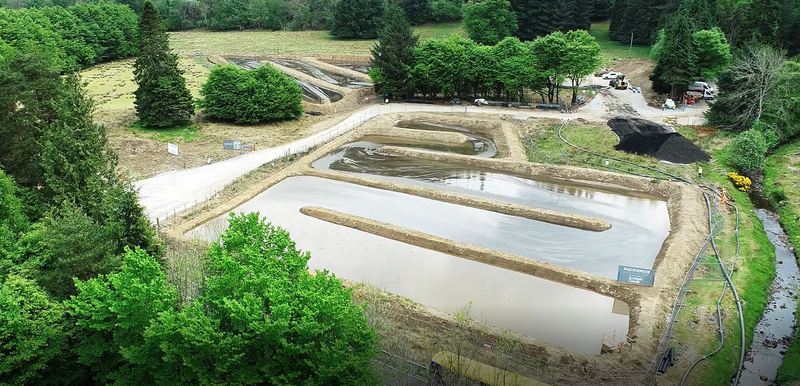
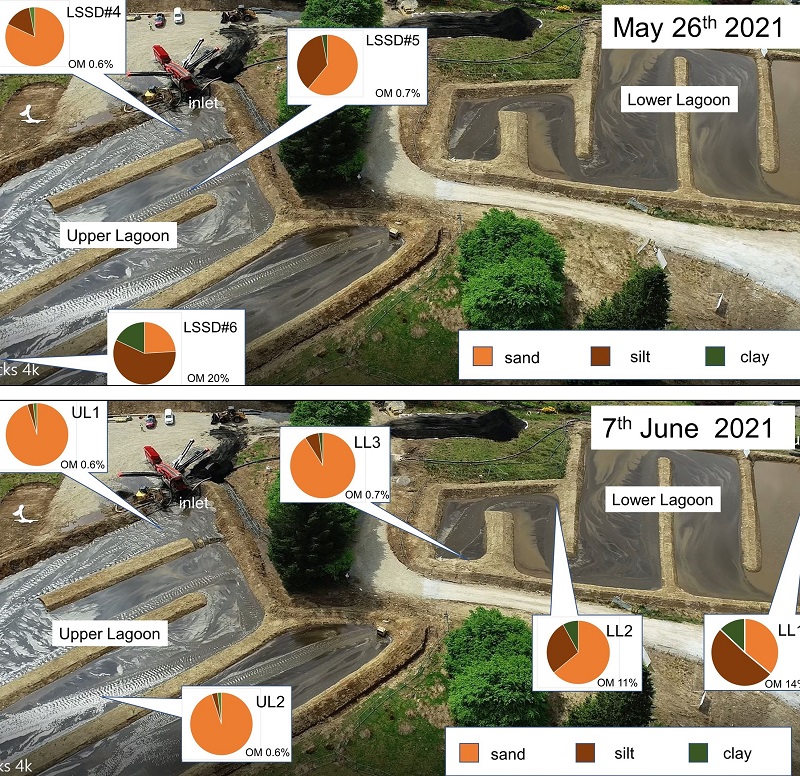
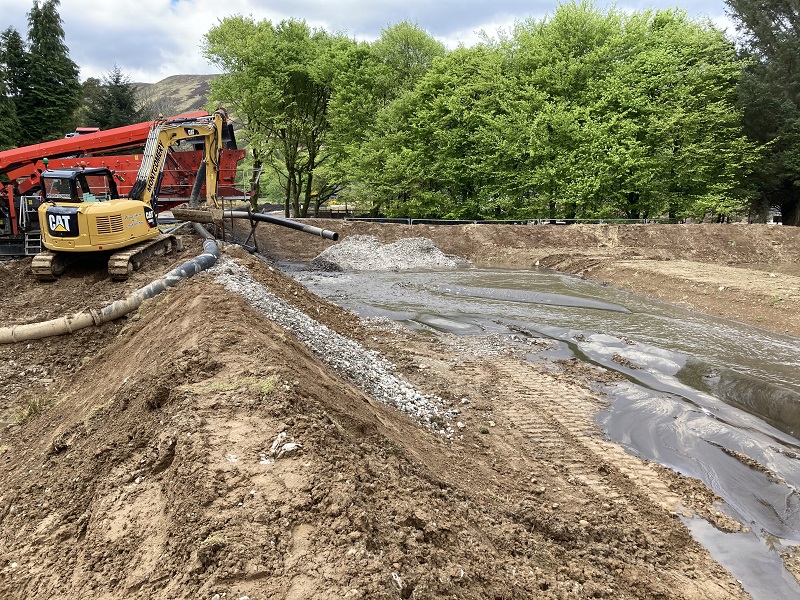
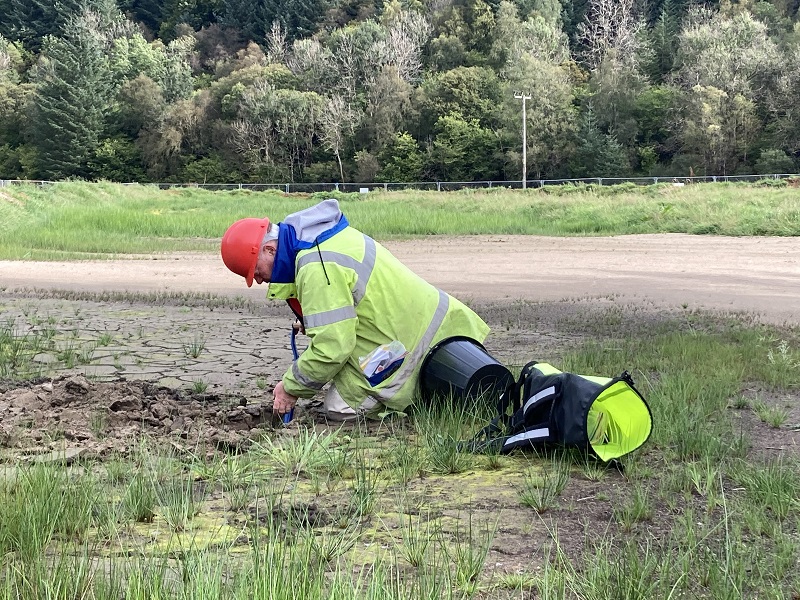
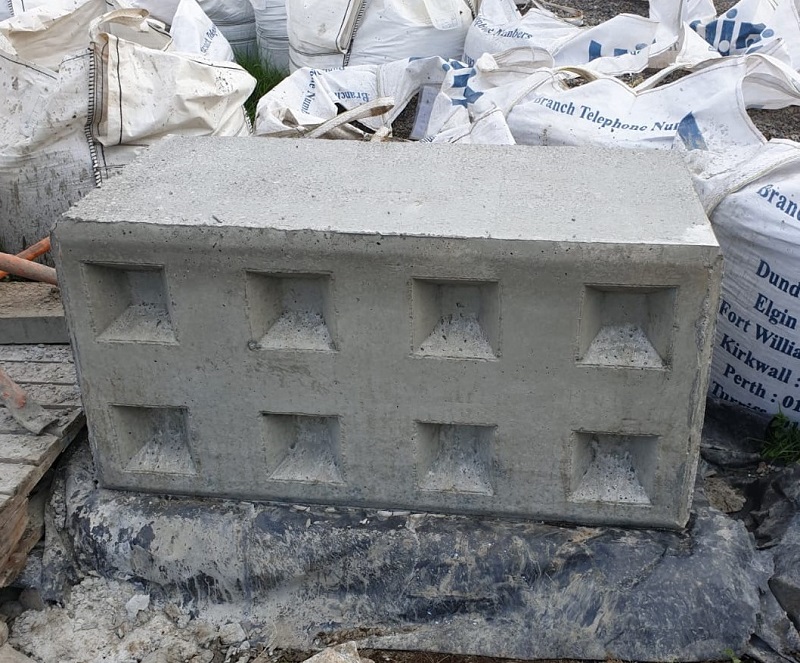
References/web links
References/web links 1. British Standards Institute (2002). BS EN 13043:2002 Aggregates for bituminous mixtures and surface treatments for roads, airfields and other trafficked areas. 2. British Standards Institute (2015). BS 3882:2015 Specification for Topsoil.: BSI. 3. Hadj Sadok, R., Maherzi, W., Benzerzour, M., Lord, R., Torrance, K., Zambon, A., et al. (2021). Mechanical Properties and Microstructure of Low Carbon Binders Manufactured from Calcined Canal Sediments and Ground Granulated Blast Furnace Slag (GGBS). Sustainability, 13(16), 9057.